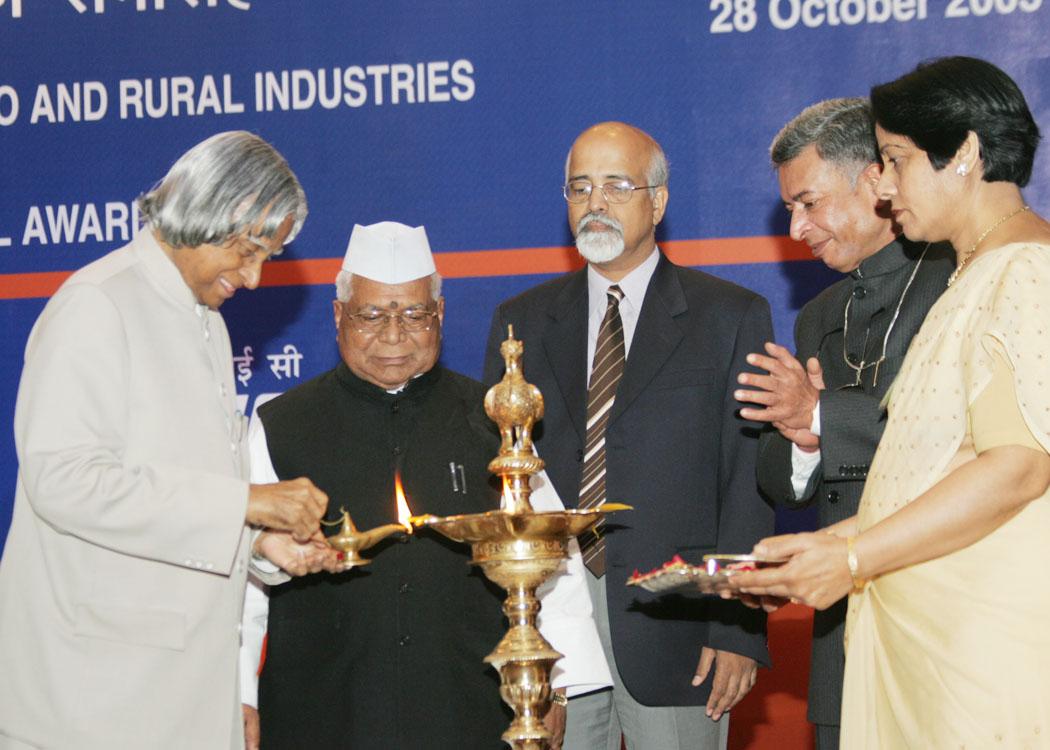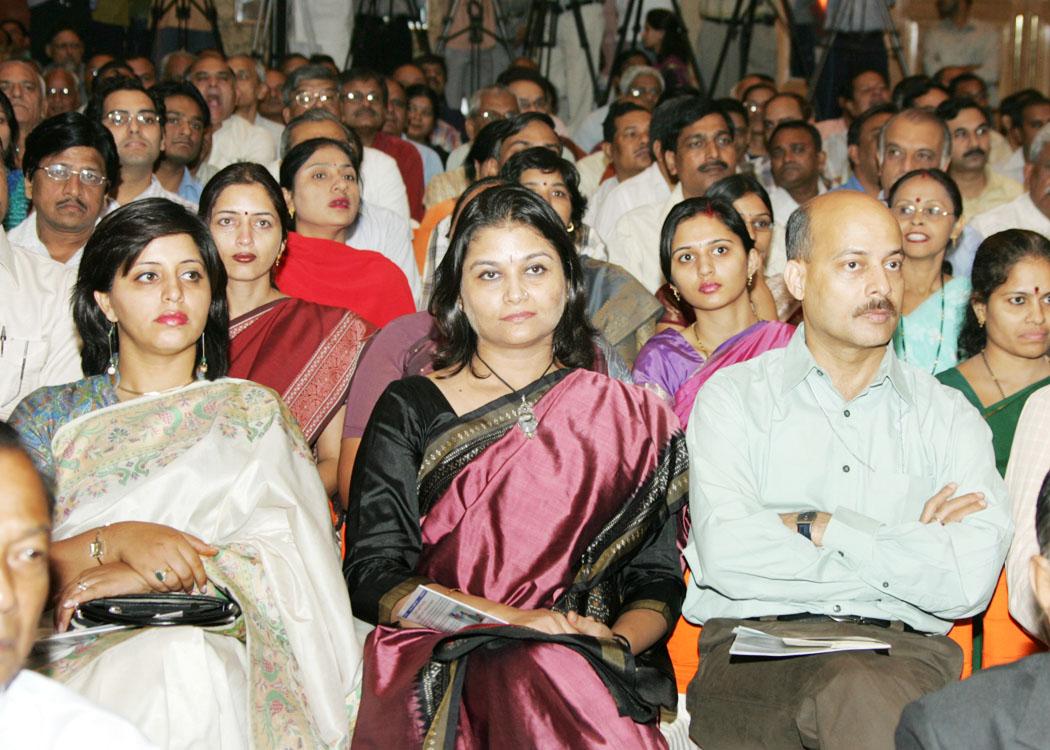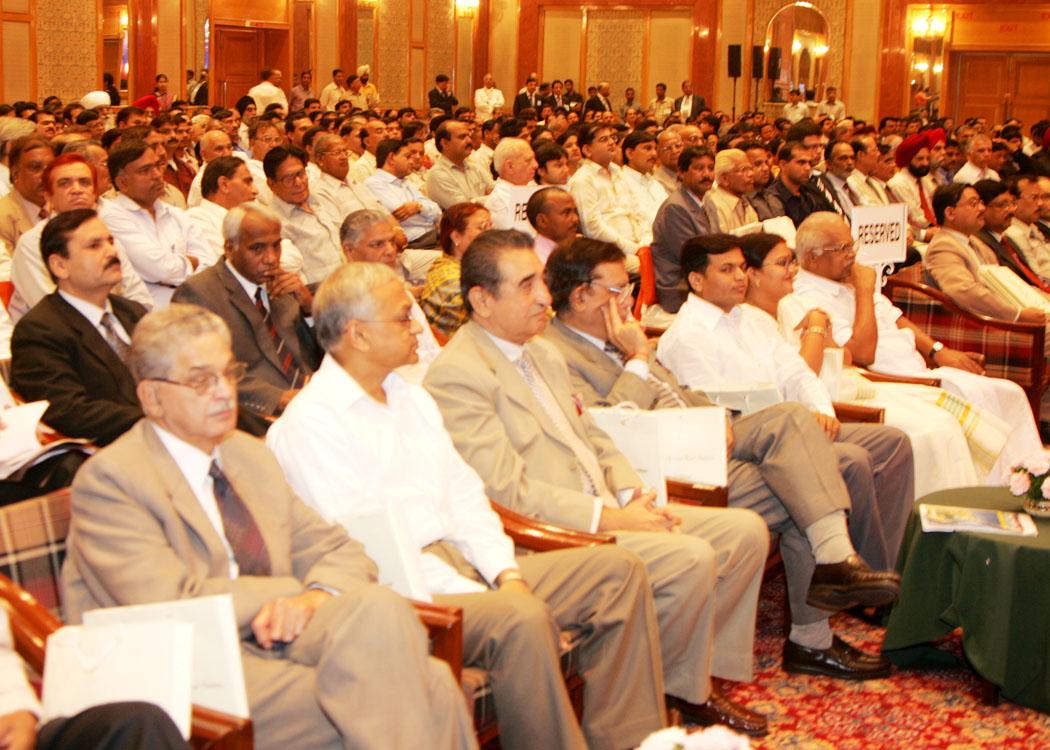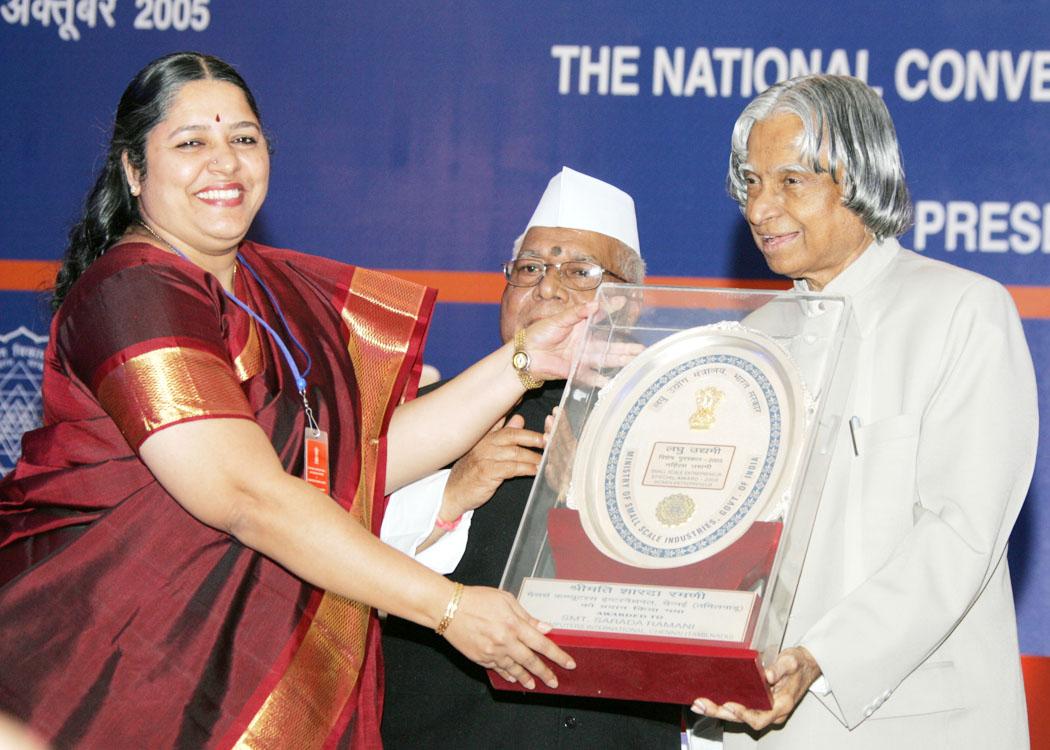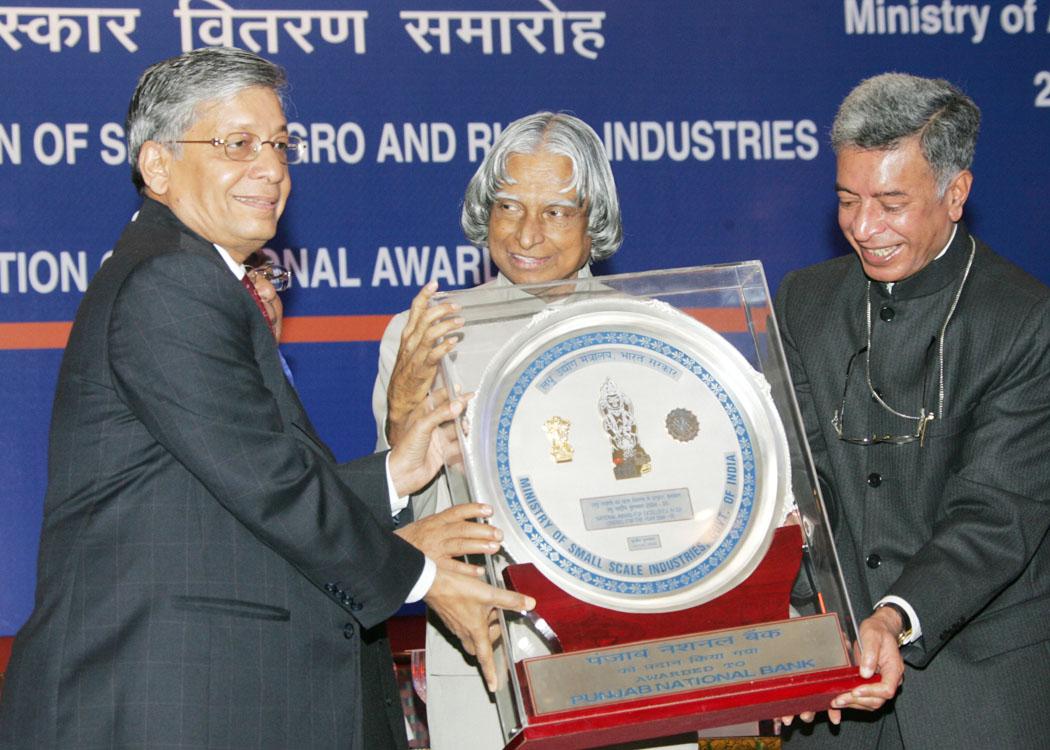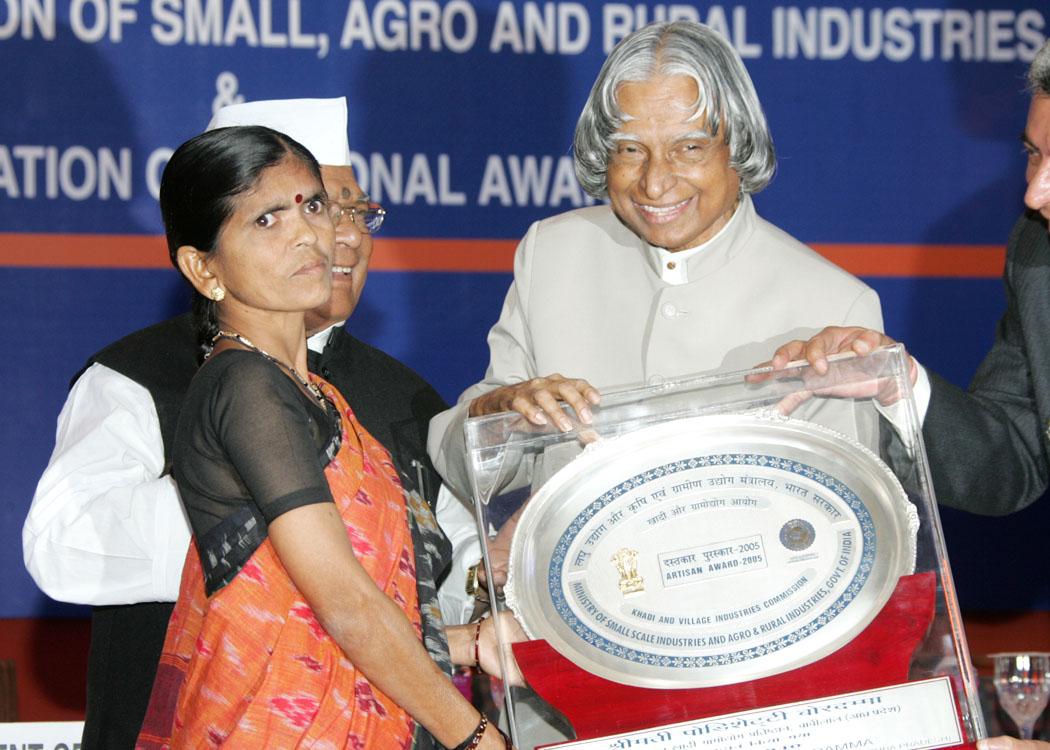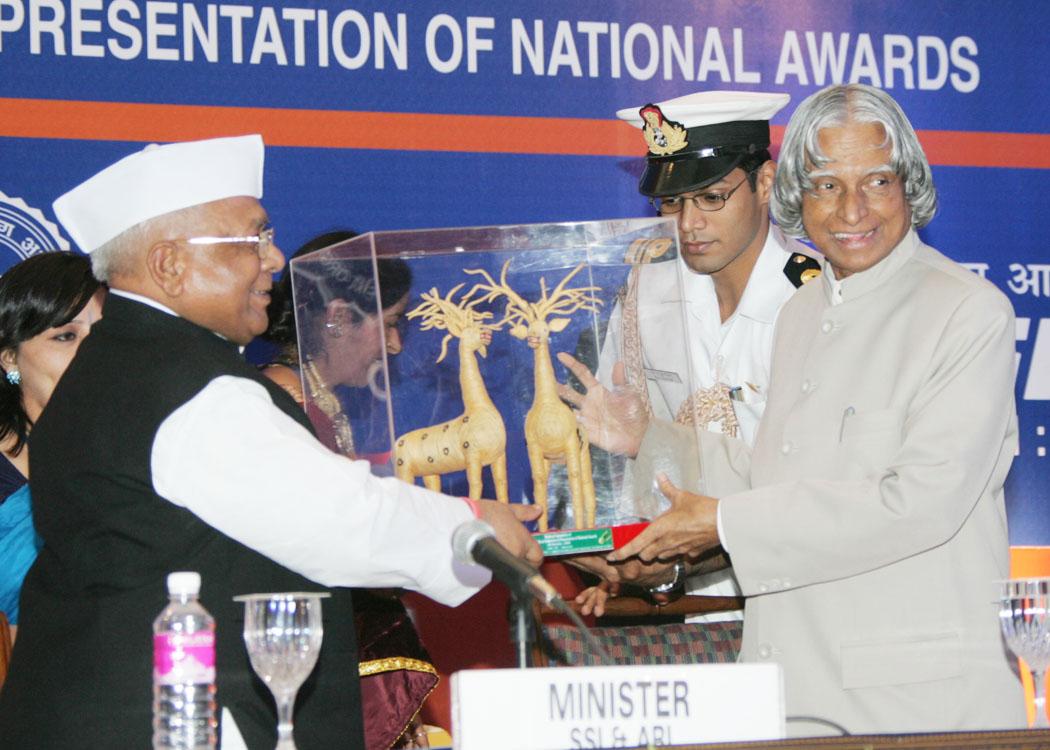Address At The Inauguration Of The National Convention Of Small Entrepreneurs And Presentation Of National Awards, New Delhi
New Delhi : 28-10-2005
Capacity Building in Small Scale Industries
I am delighted to participate in the inauguration of the National Convention of Small Entrepreneurs and Presentation of National Awards to various small scale industrialists. I congratulate the award winners for their commitment to excellence. I greet the organizers, leaders of industries, entrepreneurs and participants from various parts of the country. I was thinking what shall I discuss with you today and I have selected the topic for discussion: ?Capacity Building in Small Scale Industries?. The foundation for the Capacity Building is the law of development, innovation and creative leadership.
Law of Development
I was studying the development patterns and the dynamics of connectivity between nations, especially in trade and business. As you all know, the world has a few developed countries and many developing countries. What is the dynamics between them and what connects them? Developed country has to market their products in a competitive way to different countries to remain as developed country. The developing country, to get transformed into a developed country, they too have to market their products to other countries in a competitive way. Competitiveness is the common factor between the two types of countries, both developing and developed. It has three dimensions: quality of the product, cost effectiveness and supply in time. Indeed this dynamics of competitiveness in marketing of products by developing and developed countries is called the law of development. Hence competitiveness is an important factor for SSI Sector, especially for exporting their products. This is all the more important because of the WTO environment.
Innovation
Innovation is the key for competitiveness. In the recent Global Competitiveness Report, I find, in terms of Growth Competitiveness Index, Finland is ranked one, USA is ranked two, Singapore is ranked six and Iceland seven. China is 49 and India is 50. Competitiveness comes out of innovation and technology. The large proportion of new ideas and innovation are generated by scientists, engineers and technicians and in the educational and research environment. This innovation arises from private sector initiative and the R & D productivity of the firms, shaped by policies of the nation and nature of the creative and encouraging environment in the institutions. The innovative products emanate based on the Government policies and the creative leadership of the industries. So far we have discussed the competitiveness and innovation. Now I will give the profile of creative leadership.
Creative Leadership
I would like to discuss the relationship between the economic development, technology and industries and the leadership.
- Nations Economic development is powered by competitiveness.
- The competitiveness is powered by knowledge power.
- The knowledge power is powered by Technology and innovation.
- The Technology and innovation is powered by resource investment.
- The Resource investment is powered by revenue and return on Investment.
- The Revenue is powered by volume and repeat sales through customer loyalty.
- The customer loyalty is powered by Quality and value of products.
- Quality and value of products is powered by Employee Productivity and innovation.
- The Employee Productivity is powered by Employee Loyalty, employee satisfaction and working environment.
- The Working Environment is powered by management stewardship and sound project management.
- Management stewardship is powered by creative leadership.
Who is that creative leader? What are the qualities of a creative leader? The creative leadership is exercising the task to change the traditional role from commander to coach, manager to mentor, from director to delegator and from one who demands respect to one who facilitates self respect. The higher the proportion of creative leaders in a nation, the higher the potential of success of visions like "developed India."
Missions for Small Scale Enterprises
What can be the missions for small scale industries and entrepreneurs? I would like to list eight missions.
1. Presently the small scale sector has 12 million units employing around twenty eight million people. Out of these 10 million units employing around 20 million people are unregistered units. There is a need to bring all the 12 million units under the registered category so that all the 28 million people can be provided benefits as applicable to workers in the organized sector of the economy. We have to study why very high percentage of small scale industries is unregistered? Why they prefer to remain unregistered? Ministry of Small Scale industry has to analyze this problem and find an innovative solution.
2. As per RBI report nearly 1.4 lakh SSI units are sick. It is essential to revive maximum number of sick SSI units by injection of the technology in right time supported with capital infusion and continous training programme. The Ministry of Small Scale industries have to initiate mission mode programme of reviving these sick units in a time bound manner before December 2006. Nursing activity should commence now, failing which even these Units will become non-revivable. Also, it is necessary to close the non-revivable units at the earliest so that they do not become a further drain on the economy.
3. At present, the small scale industries contribute to an export of over $ 20 billion a year. A drive is required to be created to increase the export from this sector to at least $ 40 billion within the next five years. This will definitely be possible if a thrust is given to the export of garments, processed foods and pharmaceutical and cosmetic products.
4. The National Commission for Enterprises in the unorganized sector has proposed the formation of growth poles in different parts of the country for facilitating the expansion of production and employment in small and micro enterprises. Ministry of Small Scale Industries in collaboration with the Ministry of Rural Development can plan to establish at least one growth pole per district, in the six hundred districts of India, within the next two years.
5. One of the major reasons for sickness of few small enterprises is the delayed and the inadequate sanctioning of working capital by the banks. The Ministry of small scale industries in collaboration with Reserve Bank of India should bring out a simplified procedure of sanctioning of working capital limits on the basis of 20% of the projected annual turn over to all enterprises. In this respect banks must become a partner of the small scale industries.
6. Cost and quality of the product must necessarily be inbuilt right at the design stage with value engineering criteria. In the value chain of the product life cycle, the design effort contributes fifty percent of the total value and quality. Thus the design knowledge gives a larger leverage to the small scale industry for realization of competitive products.
7. Competitiveness comes out of large quantity needs, cost effectiveness, quality, and marketing capability. Today a new situation has come, where MNCs are coming to our country for the availability of high technical man power and lower cost of production in software or hardware or combination of both. Hence, Small Scale Industries have to take this potential as an advantage. Also I would like to suggest a thought in out-sourcing and sub-contracting methods. Here particularly you may aim at realizing component level outsourcing to cottage industries and also to homes wherever applicable which will reduce the product cost substantially and make your products competitive.
8. Government has decided to permit mixing of 10% bio-fuel with diesel for cars. This has opened up new opportunities for employment and wealth generation. Certain multi-purpose tree such as Jatropha is being grown in the waste land with very little input in many States. Large quantities of Jatropha seeds will be available in our rural areas within the next one or two years. I would request the Small Scale Industrialists and entrepreneurs assembled here to take the initiative, generate detailed project report in collaboration with technical agencies on this project and create enterprises with financial support from banks in rural areas and commission extraction and transesterification plants leading to production of cost-effective bio-fuel. The Ministry of Small Scale Industries and Rural Development can assist the entrepreneurs in setting up these enterprises.
9. A National Survey is essential to establish the total number of small scale industries in the country, their performance characteristics and their problems. This survey should be done within the next six months so that the results of the Survey can be used to implement appropriate corrective action for strengthening this vital economic sector.
Conclusion: PURA as an Enterprise
As you are aware the whole nation will have around seven thousand PURAs (Providing Urban Amenities in Rural Areas). There are number of Small Scale Industries in different parts of the country. The small scale industrialist is a promising candidate for becoming the chief executive for managing the PURA complexes in an integrated way. PURA enterprises can also undertake management of schools, health care units, vocational training centres, chilling plants, silos and building a market, banking system and the regional business or industrial units. A new mission mode management style has to emerge for PURA enterprises. It should not be looking for protective legislations to support them. Rather they should be efficient to compete with others. This new PURA enterprise needs partnership from small scale industrialists, banks, the Government and also the large enterprises. Banks can train the entrepreneur for managing the PURA in their training centres and also provide them loans for creating and running PURAs as a business proposition. Small Scale Industrialists and Entrepreneurs have to ask themselves, what is the value addition they do towards the product realization. This value addition is the key to competitiveness.
Once again let me congratulate the award winners and my best wishes to the small scale industrialists and the entrepreneurs assembled here for success in their mission of making the small scale sector a wealth generator for the nation.
May God bless you.


